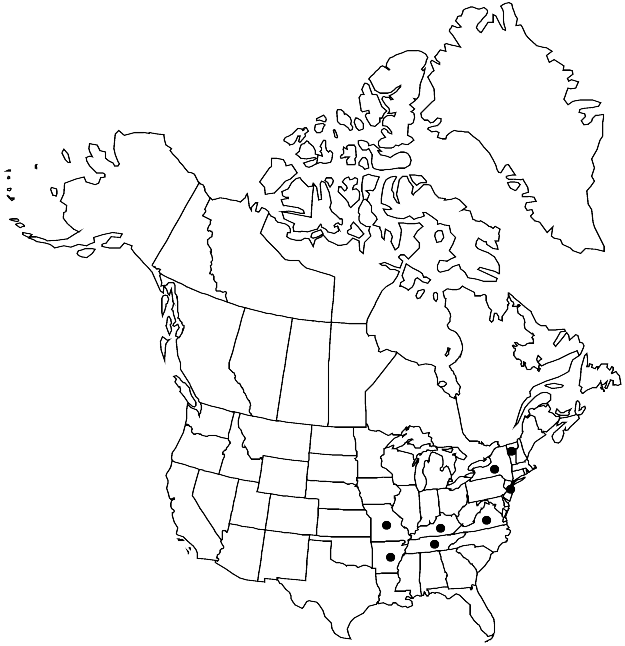Neckera besseri
Verh. K. K. Zool.-Bot. Ges. Wien 10: 368. 1860.
Plants to 2 cm. Stems with branches common, flagelliform; paraphyllia absent. Stem leaves (central) ovate to obovate, flat, 1.1–1.3 × 0.4–0.6 mm; margins entire; apex obtuse to broadly acute; costa double, short, rarely single; alar cells irregularly quadrate; basal laminal cells irregularly rectangular, 25–37 × 7 µm; distal medial cells rhombic to rhomboidal, 15–18(–30) × 7–9 µm; apical cells rhombic, 5–12 × 7 µm. Sporophytes unknown.
Habitat: Limestone or sandstone cliffs, soil
Elevation: moderate elevations (300-500 m)
Distribution

Ark., Ky., Mo., N.J., N.Y., Tenn., Vt., Va., Europe.
Discussion
Neckera besseri is distinguished from other species of Neckera in the flora area by its small stature and ovate to obovate stem leaves; distribution is limited to eastern North America. K. A. Wagner (1952) and R. R. Ireland (1961) treated this species as Homalia jamesii and H. gracilis, respectively, but He S. (1997) accepted it as Neckera.
Selected References
None.